The Last Samurai: was Hollywood’s vision of imperial Japan really so ‘problematic’?
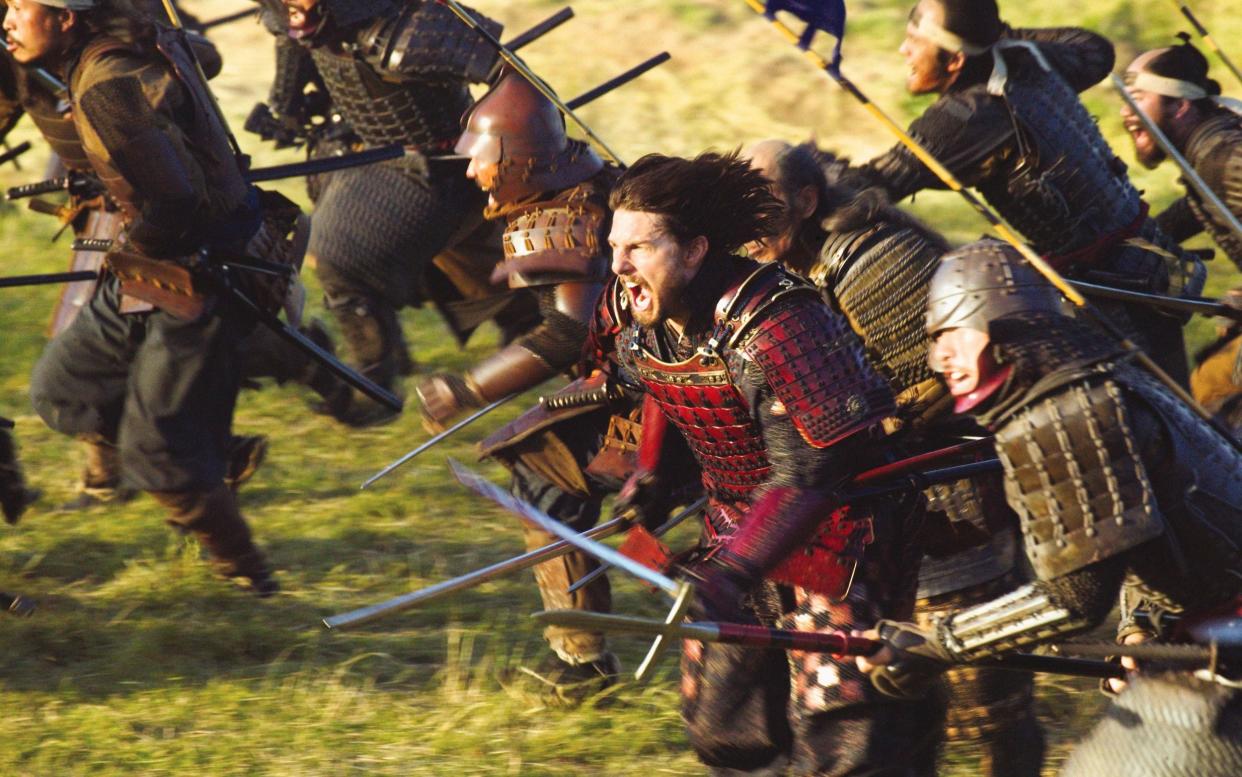
There is nothing which Tom Cruise cannot conquer. In Top Gun, he conquered the skies; in Mission: Impossible, he has conquered every death-defying scenario imaginable; and now, in real life, he’s set to conquer space with Elon Musk.
Back in 2003, in The Last Samurai, Cruise conquered Meiji-era Japan. As soon as his boozed-up, broken-down soldier stepped off the boat, he mastered the lingo, learned all the right moves and kitted himself out with the best samurai gear. But the film immediately prompted questions about its depictions of Japanese culture. And recently, Sky Cinema slapped on it an “outdated attitudes, languages and cultural depictions” warning. If Edward Zwick’s film were made today – starring, one assumes, serial cultural-appropriation offender Scarlet Johansson – the resulting furore on Twitter would be unbearable.
Directed by Zwick, who also co-wrote with John Logan and Marshall Herskovitz, The Last Samurai was released around the same time as the similarly dubious Kill Bill and Lost in Translation, both of which dealt with the meeting of West and East.
“It’s not just the setting that unites these movies,” Motoko Rich wrote in 2003 in the New York Times. “They are the objects of heated debate, particularly among Asian-Americans and Japanese [people], about whether Hollywood’s current depictions of Japan are racist, naïve, well-intentioned, accurate – or all of the above.”
The problem, perhaps, is history. The Last Samurai is a rampaging, scenic and thoughtful adventure, and even with a sword above his head, Tom Cruise’s magnetic presence remains the true weapon among his all-conquering abilities. But it’s very much Cruise’s Braveheart: an epic packed with anachronisms, inaccuracies and historical quibbles. It’s pure – and, some would argue, problematic – romanticism.
The Last Samurai tells the story of Nathan Algren, a former US Army captain who fought against the Native Americans, and drinks to obliterate the memory of his atrocities. A shady Japanese businessman then recruits Algren to train the new Imperial Army, with which he intends to quash the uprising by the old-school samurai.
After their first disastrous battle – in which poor Billy Connolly gets skewered – the samurai capture Algren and force him to live in a peaceful mountain village. He befriends chief warrior Katsumoto (Ken Watanabe), kicks the booze, and learns the way of the samurai. When it turns out that the westernised Imperialists are the baddies after all, Algren joins the samurai uprising.
The film amalgamates several rebellions into one epic plot, but the historical and political context is correct. For more than 250 years, Japan was largely isolationist, nominally ruled by the emperor but governed by the Tokugawa shoguns. When the American commodore Matthew Perry arrived in 1853, he forced Japan to open itself up to the rest of the world.
With unrest over how the Tokugawa shogunate was dealing with new foreign influence, support mounted to restore power to the emperor – the 15-year-old Meiji. This began a period known as the Meiji Restoration, a time of social, cultural and political reform which saw rapid modernisation and industrialisation – railways, education, fashion, technology and military – with experts and advisors coming from around the world. Japan caught up with several hundred years of progress in just a few decades.
Cruise’s character is based on a real person: a French soldier named Jules Brunet, who arrived in Japan in January 1867, a year before the Meiji Restoration began, as part of a 12-man military mission. They were invited by the recently appointed shogun, Tokugawa Yoshinobu, to train his men in modern weapons and tactics. For Napoleon III, it was a way for France to gain influence in Japan.
Brunet helped teach a unit of 900 soldiers, training them as infantry, cavalry and artillery companies. According to Isaac Meyer, host of the History of Japan podcast: “The men came to deeply respect their Japanese students.” It’s in stark contrast to Cruise’s character, who has so little respect for his trainees that he stands in front of one soldier and orders him to shoot – knowing full well he’ll miss. He’s not wrong, of course: despite being armed with rifles, the soldiers are easily defeated in their first battle by sword-wielding samurai.
In truth, the battles of the Boshin War and Satsuma Rebellion – on which the action of The Last Samurai is based – were decided by superior firepower. Brunet was present for the Battle of Toba-Fushimi, the first conflict in the Boshin War, which erupted after Imperialist reformers sought to strip Tokugawa Yoshinobu of his title and lands.
Tokugawa Yoshinobu stormed Kyoto, with a shogunate force of 15,000. The Imperialists had just 5,000, but were armed with Armstrong guns and Minié rifles. The shogunate forces were outgunned across two days of fighting, with defections to the Imperialists further depleting their numbers.
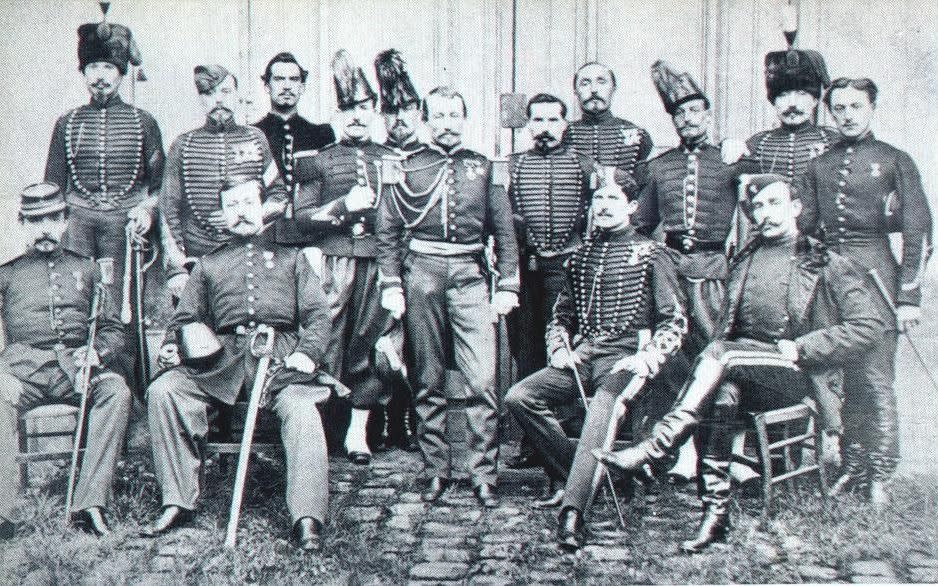
The French mission was ordered home, but Brunet and four other Frenchmen defied that order, and remained to fight. Brunet wrote to Napoleon, explaining he was fighting with “the party favourable to France in Japan”. Tokugawa Yoshinobu surrendered in Edo, which was renamed Tokyo, and Brunet escaped with the remaining forces of the shogunate. They formed the “Republic of Ezo”, for which Brunet became a tactical commander. Brunet was also at the Battle of Hakodate, which lasted from December 1868 to June 1896, but escaped to a French warship.
Unlike Cruise’s character, Brunet didn’t dress in centuries-old samurai armour for these battles (neither did many of the Japanese at that time). In pictures of Brunet taken at time, he wears his French uniform, adorned with his Légion d’honneur and Mexico Medal, which he was awarded for his part in the Second French Intervention in Mexico.
Aspects of the Nathan Algren character can also be traced to Frederick Townsend Ward, an American who commanded the “Ever Victorious Army” in Imperial China. A more telling inspiration might be Kevin Costner’s John Dunbar in Dances With Wolves, whose box-office and Oscar-winning success likely trumps any fidelity to historical fact. (Timothy Spall’s translator, who guides Cruise through his early days in Japan, is also based on a real-life person – a diplomat named Ernest Satow, who negotiated deals with Britain and founded the Asiatic Society.)
While there are other historical inaccuracies – such as samurai speaking fluent English, and the unlikely moment in which the emperor appears before Cruise’s foreigner – the Meiji Restoration is faithfully portrayed in the film. After living with the samurai in the mountains, Algren returns to Tokyo to find it quickly modernising: telegraph wires; Western fashion and hairstyles; and a vastly improved Imperial Army. The influence of pro-reform, westernised businessmen over the Emperor Meiji (played by Shichinosuke Nakamura – who does bear a resemblance to the real Meiji) seems based on the influence of the Chosu and Satsuma domains during the Boshin War.
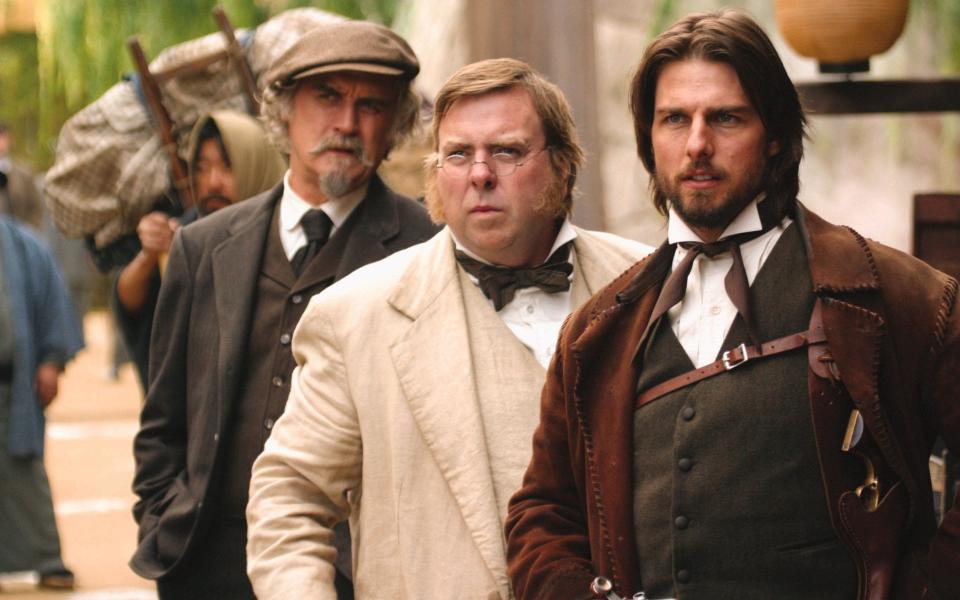
In one scene, soldiers humiliate a samurai in the street by slicing off his traditional chonmage topknot. This is also based on reality. In 1871, a decree ruled that they must wear their hair in western styles; by 1876 they were banned from carrying their swords.
Ironically, it’s the samurai who are depicted most inaccurately. Led by Ken Watanabe’s Katsumoto, they spend their days training and being generally pious in the mountains. Their uprising against the Imperialists is for honour – a final stand for the traditional ways and bushido moral code. They won’t even arm themselves with guns, deeming it “dishonourable”. They insist on charging into machine-gun fire armed only with swords.
The real samurai were a ruling class who rebelled not out of honour, but because the Restoration stripped away the status and privileges they had enjoyed under the old feudal system. With the new Imperial Army conscription, the samurai became obsolete and had to find new roles. Some joined the army or became businessmen, but many were driven into poverty. The samurai who fought to restore the emperor’s rule found themselves disgruntled with the loss of power, lands and stipends. There were several samurai revolts, including the Saga Rebellion in 1874.
Writer-director Edward Zwick, being interviewed by The Independent at the time, said of all the inaccuracies he felt most guilty about “having romanticised certain parts of the samurai culture... it was an aristocratic culture that existed on the backs of the peasants. It was sometimes quite brutal and there were real licenses that I took, fully aware of what I was giving in exchange for what I was getting.”
Among the disgruntled samurai was Saigo Takamori, the leader of the 1877 Satsuma Rebellion. Takamori is the basis for the Katsumoto character, though Zwick said he purposely chose not to use the name Saigo Takamuri. “I chose not to bowdlerise a real piece of history,” he said.
Saigo had fought for modernisation in the Boshin War but, according to Isaac Meyer, he became “deeply conflicted between loyalty to the emperor, whose government he helped establish, and his loyalty to the ideas of the samurai class.”
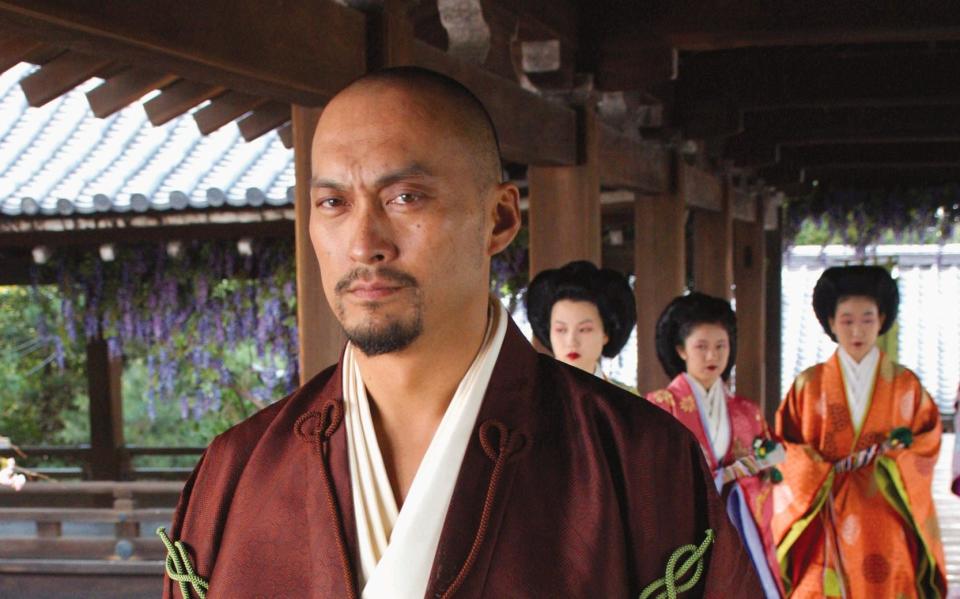
As part of Meiji’s government, Saigo advocated for military action against Korea in 1873. He even offered to travel there himself and kick off the violence. Later, he resigned and established samurai academies in Satsuma (modern-day Kagoshima), where he oversaw training in weapons, artillery and strategy. By 1877, Saigo had 20,000 students, and Satsuma had all but broken from Meiji’s Japan. Suspicious of subversive activities, the government tried to confiscate his artillery.
In response, Saigo’s rebellion began: his forces laid siege to Kumamoto Castle and fought at the Battle of Tabaruzaka. Far from only carrying swords and traditional samurai armour, Isaac Meyer described how Saigo “made use of Western firepower with extreme prejudice.” Some of the rebels wore Western-style uniforms – though Saigo is said to have burned his – and were armed with Russian rifles, as well as a limited number of mountain guns and mortars. As the story goes, they lost when they ran out of firepower.
After a retreat, Saigo’s men – now down to just 40 men – made their last stand on the mountain of Shiroyama. They charged into a force of 30,000 Imperial men. The final charge does resemble the film’s climactic battle, as Katsumoto and his remaining samurai ride into Howitzer fire. So honourable is their final charge that the Imperial soldiers go down on one knee out of respect.
According to legend, the real Saigo performed seppuku, and was then beheaded by one of his men. Evidence suggests he was in fact killed by gunfire.
The Last Samurai is more interesting for not having Cruise slice through the Imperial soldiers and save Japan. (On the other hand, it’s Cruise’s character – in full white-saviour mode – who gives Katsumoto his honour by performing seppuku for him.) Ultimately, the emperor rejects a trade deal with America and embraces tradition. It’s rousing stuff, but mangles of history for the sake of having an American hero saunter in and teach a modernising nation the virtue of romanticised tradition.
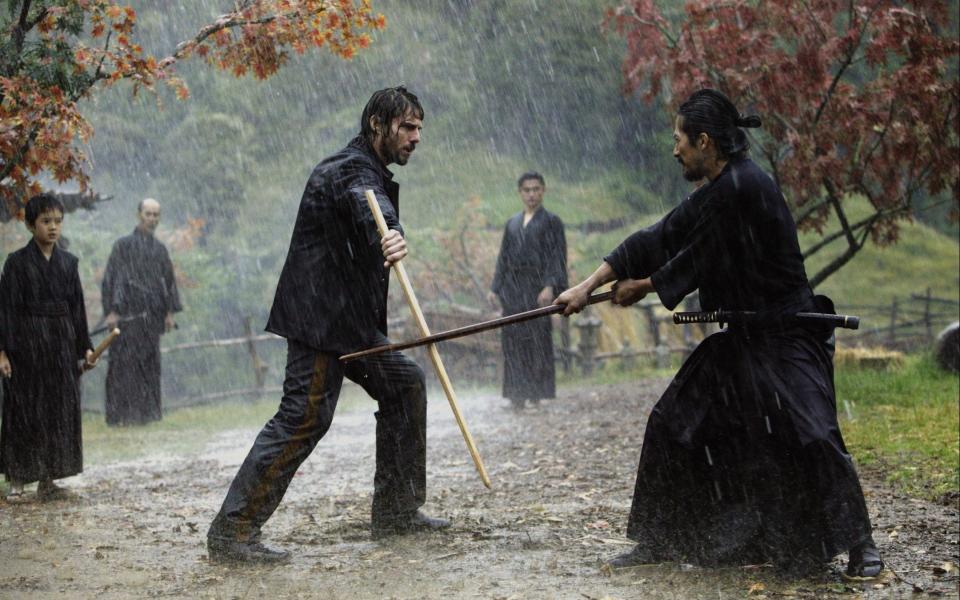
In a statement he made, in one variant or another, to nearly every interviewer while promoting The Last Samurai, Cruise said: “I was absolutely fascinated and in awe of the culture. I found it ecstatic, the people fascinating and I just wanted to know more about their history, how they lived, and how they got to where they are today.
“One of the great things about being an actor, in doing what I do, is I get to travel to places like that and I learn about the people.”
While Western reviewers questioned the film, and it had a slightly disappointing opening weekend in the US, it was popular in Japan, taking $8.36 million there in its first weekend.
“What I’m most happy about,” said Zwick, “is the film’s reception in Japan, where it seems to have become something of a phenomenon. It [has] every possibility of being one of the biggest hits in their history, which means everything to me, as you can imagine. I’ve tried to honour a culture, and [the film has] been embraced by that culture.”
Indeed, a reviewer in the Japanese newspaper Yomiuri Shimbun praised the film for conveying the traditional gracefulness of their culture. Another reviewer, writing for Mainichi Shimbun, praised Zwick’s understanding of bushido, while acknowledging its inherent samurai problem.
“Even the samurai had some vulgar attributes,” wrote Tomomi Katsuta. “The film may not be a story of the samurai based on complete historical truth – it is rather a story of an ‘Americanised’ or idealised version of the samurai, a story of a utopia to Americans.”

